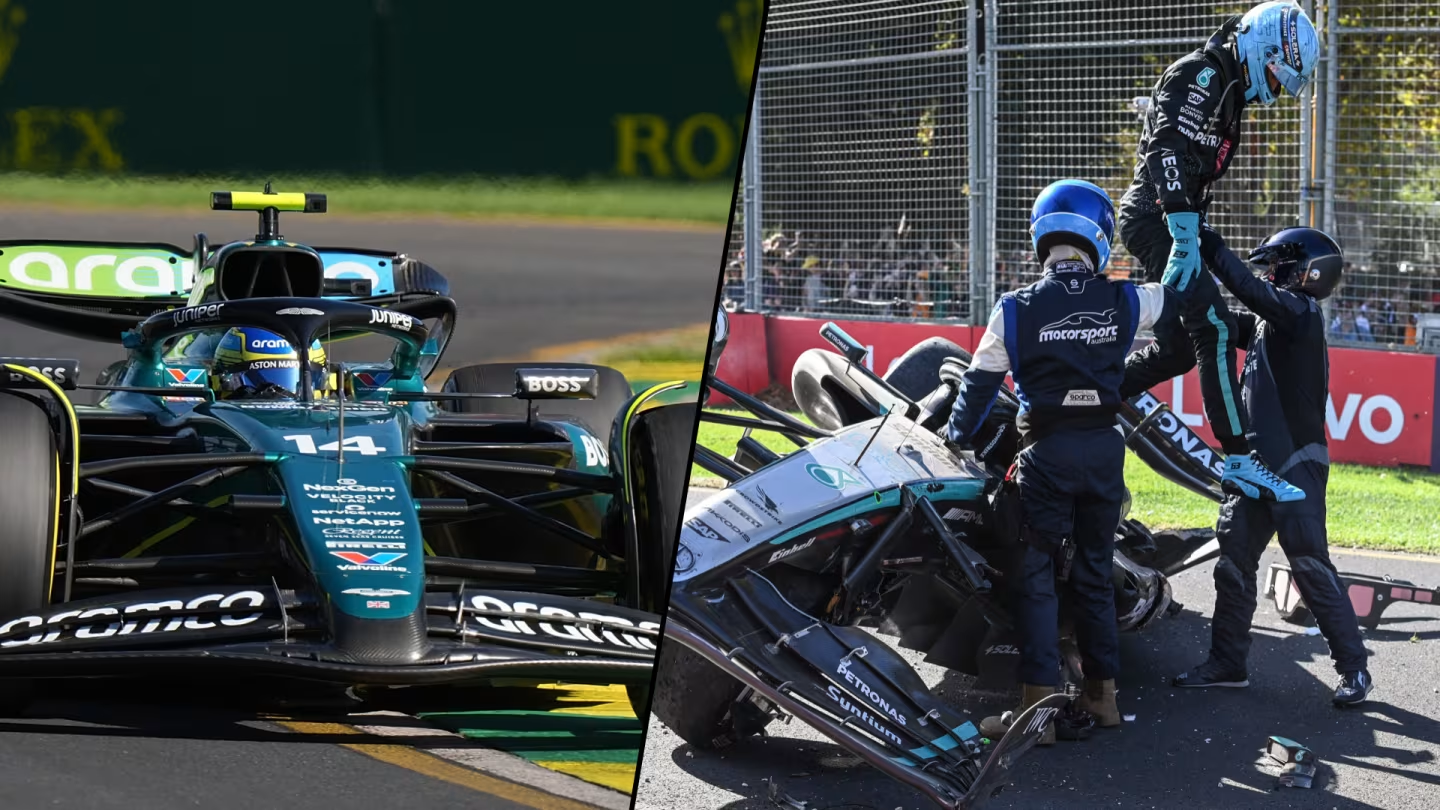Nico Hulkenberg expressed his concerns over Fernando Alonso’s defensive driving tactics at the Australian Grand Prix. After a risky maneuver against George Russell, Alonso received a penalty, raising questions about safety and sportsmanship in F1.
Between the lines
- Hulkenberg was unimpressed with Alonso’s defensive tactics, particularly in the high-speed, narrow confines of Melbourne’s street circuit.
- Alonso’s move led to a heavy crash for George Russell and a subsequent 20-second penalty added to his race time.
- Concerns were raised about the potential danger of such maneuvers, especially at the high-speed, blind-exit corner where the incident occurred.
- Confusion over Alonso’s post-incident comments regarding throttle issues added to the controversy.
- Hulkenberg suggests a review of track safety, especially the barrier placement that caused Russell’s car to rebound onto the track.
Go deeper
In the aftermath of the Australian Grand Prix, Nico Hulkenberg didn’t mince words when discussing Fernando Alonso’s defensive strategy. The incident in question involved a risky deceleration by Alonso on a fast approach to a blind corner, which is not only a grey area in terms of racing etiquette but also a safety concern. Hulkenberg’s main gripe was with the choice of location for such a tactic, emphasizing the inherent dangers of the circuit’s layout.
The incident led to a retrospective penalty for Alonso, which converted into additional race time, impacting his final standing. This penalty highlighted the seriousness with which race stewards are treating potentially dangerous driving behaviors, especially in the wake of high-profile crashes.
Hulkenberg’s critique extended beyond the immediate incident, touching on the broader implications for track safety. He pointed out that the barrier design at the corner where Russell crashed could lead to cars bouncing back onto the track, a situation that could have catastrophic consequences in a sport where split-second decisions are the norm.
Alonso’s initial radio comments suggested a mechanical issue with his throttle, but later explanations shifted towards justifying the move as a standard racing tactic. This inconsistency didn’t sit well with Hulkenberg, who saw it as a change of tune that undermined the initial mechanical failure defense.
Looking forward, Hulkenberg’s comments may spark discussions within the F1 community about the balance between aggressive defense and the safety of drivers. The specifics of the Melbourne track layout and barrier placement are likely to come under scrutiny as part of ongoing efforts to improve safety standards in Formula 1.





